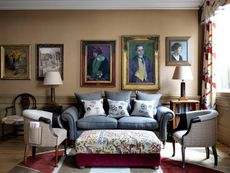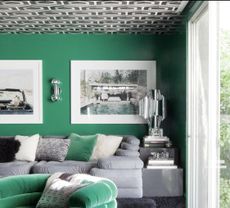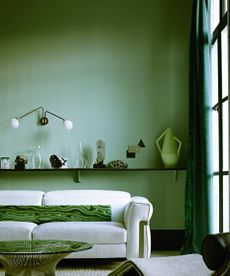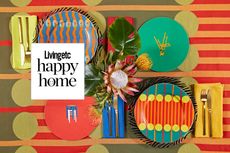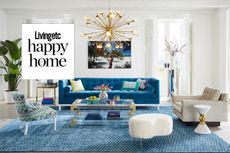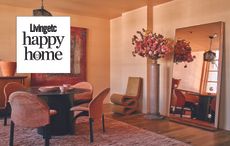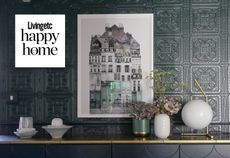What stress? Here's how your home renovation can be like therapy, according to an architect
A happy home begins with briefing your designer or architect. Here's how to put your wellbeing at the center of it, as explained by an architect
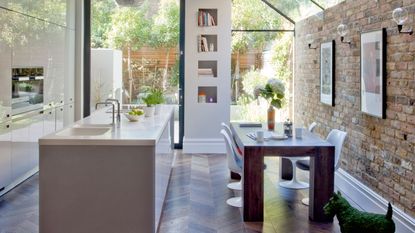

There's no doubt that renovating a home can be a stressful undertaking. Whether you're making decisions on building an extension, fitting a new kitchen or just picking a new shade of paint, the process can sometimes leave you feeling overwhelmed and out of your depth if you're not used to taking on these projects.
Decision-making for a renovation project, especially one where you're spending some serious money on an extension idea and working with an architect or interior designer, can certainly be one of the most nerve-wracking parts. But does it have to be?
According to architect Duncan McLeod, it can (and should) actually be like therapy. We spoke to Duncan, of Studio McLeod, about his unique process for getting the best out of a client brief, and why you should put your own happiness at the core of any renovation project. Here's his advice.
1. Take a different approach to wellness

Wellness has become a buzzword in architecture and interiors, and everything from biophilic design ideas to ways to ensure your home is healthy are now high on the agenda for many home renovators. Studio McLeod, however, take a different approach. 'The way we approach wellness with our clients is not try and force the next thing on them, whether that’s ‘play’, or a color, or just introducing nature,' he explains.
Instead of applying these generic wellness principles to every design, Duncan thinks the key to a happy home lies more with the people who will live in it.
'The starting point for me is not necessarily about asking the clients what they think will make them happy,' he says. 'They might answer that they want a kitchen overlooking the garden because they have a dream of baking cakes and the kids running in and out helping out. But in reality, if that only happens five times in the whole lifetime of a home, it’s not a useful approach.'
'Instead, we ask our clients to tell us what actually makes them happy. Tell us about the times in your life you’ve felt happiest, the challenges that you’ve been through that have given you a real sense of fulfillment at the end of it. That’s where we can try to understand what works in your home, and what doesn’t.'
'I think that people should start with themselves, and actually try to get a deeper understanding of what they find makes them happy. That’s the real foundation of your project,' he says.
2. Ask and answer the right questions

In any sort of interview, sometimes the questions you think you should be asking, or answering, aren't always the right ones.
'We start by asking very specific questions. What do you love about your existing house? It's a simple question, and they'll write off lists. ‘I love it when the kids pile onto the sofa and we're watching a film on a Saturday afternoon,’ and suddenly, they’re getting really excited, because they're talking about things that they know a lot about.'
'We try not to tell clients what they need, until we really understand what it is that makes them happy,' Duncan explains.
While most of us are not immune to following interior design trends, there's still stock in a designer not using a one-size-fits-all approach to your space.
'Yes, most of our clients love light and space, but we've had a client we did the same process with, and they wanted as few windows as possible - for it to look like an Argento horror film,' Duncan says. 'That's an extreme example of how people don't always fit into the same cookie cutter. You need to let people have very personal opinions and experiences about their homes.'
'In asking questions in this way, we can really dig down. For our practice, it's become known as architectural therapy, mostly because after a few projects, clients have described the process as like having therapy.'
3. Break the rules (if you have to)
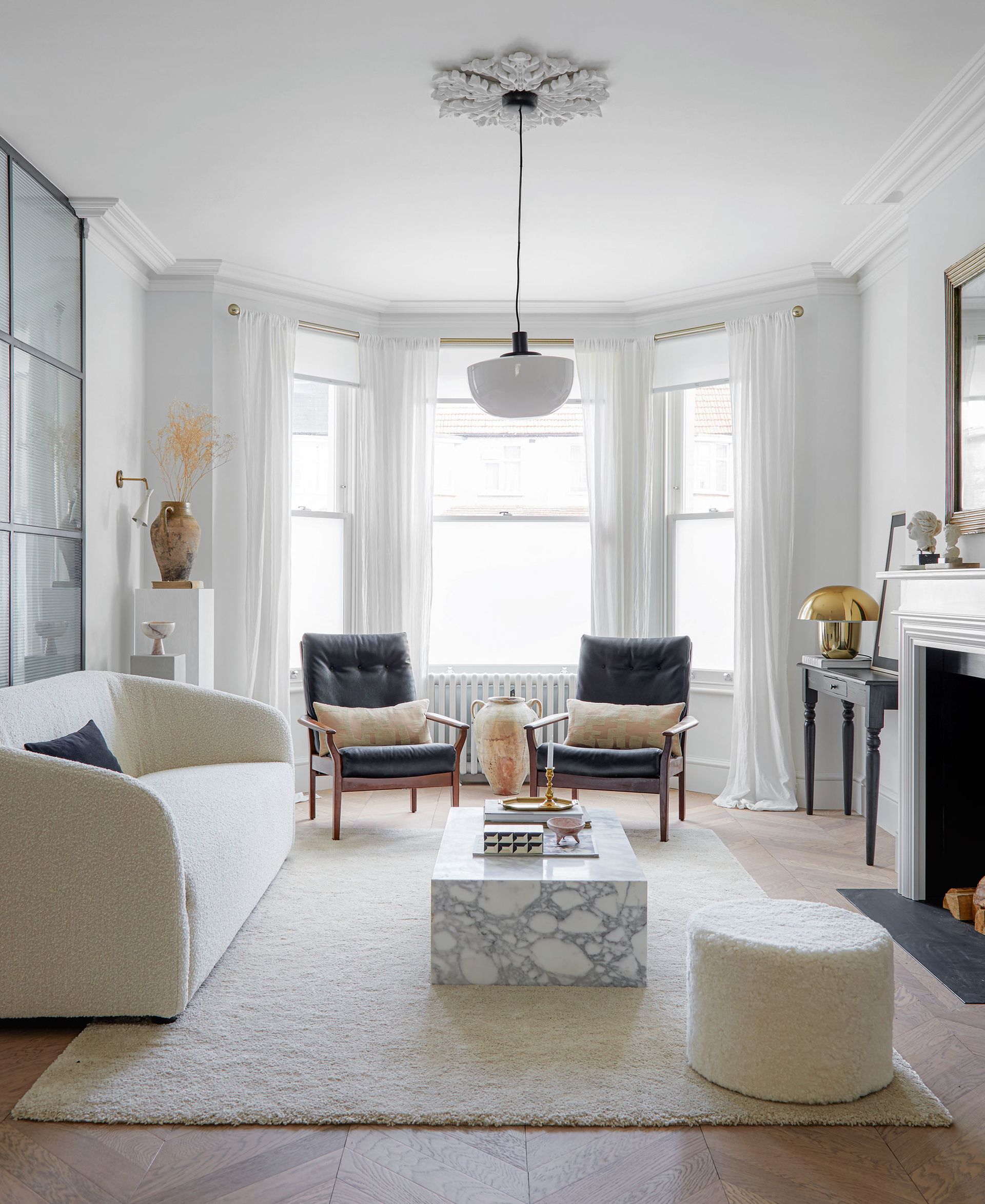
But what about the practical and functional elements of a design? 'With this process, we get a brief of what the client wants. That brief then evolves, and changes, but it always has this framework of what the client wants their life to be,' Duncan explains.
In the battle of heart versus head, sometimes the head has to win out too. Studio McLeod might take this very personal approach, but they also include practical audits too. If a client is currently living alone, will the space work if someone else was to move in, or they have guests over. A homeowner might say they want to keep re-saleability in mind too, another practical concern that needs to be part of the overall design.
'We avoid these architectural manifestos that say things like 'the kitchen must always face towards the garden' and similar,' Duncan continues. 'It's someone's idea of the perfect home, but it's not necessarily this person's idea.'
It's easy to introduce your own limiting factors going into the design process of your space. 'They might say they want the kitchen here and the bathroom there because of the plumbing,' he says. 'The plumbing comes up a lot, but you don't want to start a design based on where your stack is located, of all things.'
4. Measure the results

In Duncan's opinion, someone looking to design a house with just the basic ingredients of what the space is made up of will have a low success rate. 'It actually misses out on the main purpose of well-being,' he says. 'That is to make people well. And the way to make people well, is to try and understand what's not well, and how to make it better.'
'What's great is that at the end of the project we can go back to them and ask how their house is working. We can literally tick off the parts of the brief we've created. Are you reading more? Are you doing your yoga in the bedroom without banging your leg on the bed like you did before? It's measurable at the end.'
Of course, not every architect works in this way. Yet, it's something as a would-be renovator you can adopt into your approach to renovating your house. Centering your happiness in your designs for a new space before looking at the practical considerations is a great place to start when it comes to designing a happy home.
Be The First To Know
The Livingetc newsletter is your shortcut to the now and the next in home design. Subscribe today to receive a stunning free 200-page book of the best homes from around the world.

Hugh is the Editor of Livingetc.com. From working on a number of home, design and property publications and websites, including Grand Designs, ICON and specialist kitchen and bathroom magazines, Hugh has developed a passion for modern architecture, impactful interiors and green homes. Whether moonlighting as an interior decorator for private clients or renovating the Victorian terrace in Essex where he lives (DIYing as much of the work as possible), you’ll find that Hugh has an overarching fondness for luxurious minimalism, abstract shapes and all things beige. He’s just finished a kitchen and garden renovation, and has eyes set on a bathroom makeover for 2024.
-
 The 12 Best Table Lamps for Reading —I'm a Certified Bookworm (and Shopping Expert)
The 12 Best Table Lamps for Reading —I'm a Certified Bookworm (and Shopping Expert)When it comes to table lamps for reading, I don't mess around. If you're the same, this edit is for YOU (and your books, or course — and good recommendations?)
By Brigid Kennedy Published
-
 "It's Scandi Meets Californian-Cool" — The New Anthro Collab With Katie Hodges Hits Just the Right Style Note
"It's Scandi Meets Californian-Cool" — The New Anthro Collab With Katie Hodges Hits Just the Right Style NoteThe LA-based interior designer merges coastal cool with Scandinavian simplicity for a delightfully lived-in collection of elevated home furnishings
By Julia Demer Published
-
 3 secrets to displaying art in ways that make your home feel happy by Kit Kemp
3 secrets to displaying art in ways that make your home feel happy by Kit KempInterior designer Kit Kemp knows a thing or two about gallery walls, and here are her secrets for making your home feel happy
By Amy Moorea Wong Published
-
 The decor secrets to making your home a happier place to live by Martyn Lawrence Bullard
The decor secrets to making your home a happier place to live by Martyn Lawrence BullardInterior designer Martyn Lawrence Bullard reveals the final flourishes that elevate a home and boost your mood, too
By Amy Moorea Wong Published
-
 5 biophilic design ideas that can make your home a happier place to be
5 biophilic design ideas that can make your home a happier place to beExpert ideas from Oliver Heath about how bringing the outside in can truly boost your mood
By Amy Moorea Wong Published
-
 How to decorate to make your home feel happy by Yinka Ilori
How to decorate to make your home feel happy by Yinka IloriUsing paint and pattern to feel good is second nature to Yinka Ilori. Here's his advice for embracing that spirit yourself
By Amy Moorea Wong Last updated
-
 How to make your living room a happy place to be by Jonathan Adler
How to make your living room a happy place to be by Jonathan AdlerFill your living room with happiness with these expert tips by Jonathan Adler
By Amy Moorea Wong Published
-
 Paint your home happy with these expert tips by Kelly Wearstler
Paint your home happy with these expert tips by Kelly WearstlerUse paint to fill your home with happiness with these mood boosting ideas by designer Kelly Wearstler
By Amy Moorea Wong Published
-
 How to make your hallway feel happy by interiors expert Michelle Ogundehin
How to make your hallway feel happy by interiors expert Michelle OgundehinAdd happiness to your hallway with Michelle Ogundehin's expert decorating tips
By Amy Moorea Wong Published


